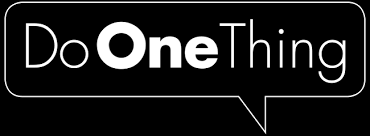 Does an attachment to an email message take the place of a thank-you letter?
Does an attachment to an email message take the place of a thank-you letter?
When you give money to causes you support, often the nonprofit sends you a response by email right away.
This seems appropriate. The nonprofit wants to go beyond the impersonal receipt that automatically goes out when you give online. They want you to know as soon as possible not just that my gift was received, but that it was appreciated. That’s part of how they hope to win your loyalty as a donor!
When you give, you often receive a thank-you letter in the mail.
This also seems appropriate. A letter is a tangible expression of appreciation. It’s less likely to be deleted unread than an email is. A letter can be personalized with a handwritten note by the Executive Director, a Board member, or someone you actually helped by making your donation.
But is it a good idea to combine the two? What about a thank-you letter that’s not delivered in an envelope with a stamp on it, but as an attachment to an email?
Attachment TY’s: pros and cons
This is the first year that an organization I support and value sent me a thank-you letter from the Executive Director in the form of a PDF. It was attached to a two-sentence email message from the Administrative Assistant.
I admit, as a donor, I was surprised and a bit miffed. As a consultant, I thought, “This is no way to treat a longtime, loyal donor. They are going to lose money doing this.”
But am I right?
I asked a sample of other nonprofit consultants and staff at organizations what they thought, and here are some of their reactions, pro and con:
I don’t know anyone doing this. Attachments are such an easy way to get caught in spam filters. And even if it showed up in my inbox, I would be very leery of opening it.
Ugh, I think that’s just not adequate. A paper thank you letter is the best option. An attached pdf just feels like the organization doesn’t care about the donor.
I have done that when instructed because we had no other contact information for the donor. I don’t like it and don’t think it’s optimal at all.
I just got one from an org for my donation. I think it’s great. I can slide it into my digital folder of donations. Saved paper and the stamp cost.
I would rather get one like that because I receive/keep all my other tax docs digitally.
Oh hello 2002, where have you been?!As …said, attachments are an easy to get blacklisted by servers. It’s also impersonal and a poor way to engage with donors.
Just this morning I received a mass “Dear Donor” email from an org I donated to last year (and a significant amount at that). My response: unsubscribeAs a donor, I would MUCH rather have an electronic acknowledgment! I’m annoyed every year trying to keep track of letters like that.I have seen both sides. I like getting it electronic because I too can save it to my tax files. I miss the personal connection from a hand signed TY, but get not all orgs can do that.I haven’t seen this yet, but I see the pros and cons. I’d personally rather have the e-acknowledgement as well…I would think the best way to handle it (though probably too labor intensive for some orgs) would be to give donors the ability to opt into/out of electronic communications.For the majority of our donors, we send emails with attached PDF tax acknowledgement letters. Major donors receive more personal outreach. We’ve only received positive feedback on this practice from our community!As a donor, I am increasingly disliking thank you notes via USPS. I know that non-profit rates apply, but … wish they’d use the $ for other things in marketing/fundraising. And I really, really hate the use of 8×11 sheets of paper that are *empty* on the back side. Maybe shift to baronial size? And still use the back for info of some kind? (I know: I give away my PR person background and experience in basic design.) However, I’m really happy when I do get a hand-written note on a small notecard. And I know that the hand-written version doesn’t necessarily “work” for documentation that needs to go with an acknowledgement of donation regarding tax advice.I’ve had it happen to me and I hate it as a donor. I don’t need or want the attachment. Put it in the body of your email.I think there’s a generational (age) aspect to this and it will become more accepted over time. I share people’s concerns about the impersonality of email acknowledgements as well as spam filtering issues, but there is definitely a shift happening among donors.Sending mail when you’re working from home is such a logistical nightmare. You need to drive somewhere to print off the letter, go find the person who needs to sign it, go to the post office….it would take me a whole morning to print cheques and get them in the mail last summer…The less paper, the better. Harder for me to lose
How “attached” are you to paper thank-you’s?
As you can see, the professionals I asked are all over the map about whether it’s okay to send a thank-you as an email attachment–or whether you should crawl on your knees over cut glass to your office if necessary to mail it instead!
So, now I’m opening the poll to you! What do you think?
- Thank-you letters must go out by mail. No exceptions.
- Email attachments are fine with me!
- No attachments, but a thank-you in the body of the email is good.
- It depends on the organization.
- It depends on the donor.
What’s your opinion?






